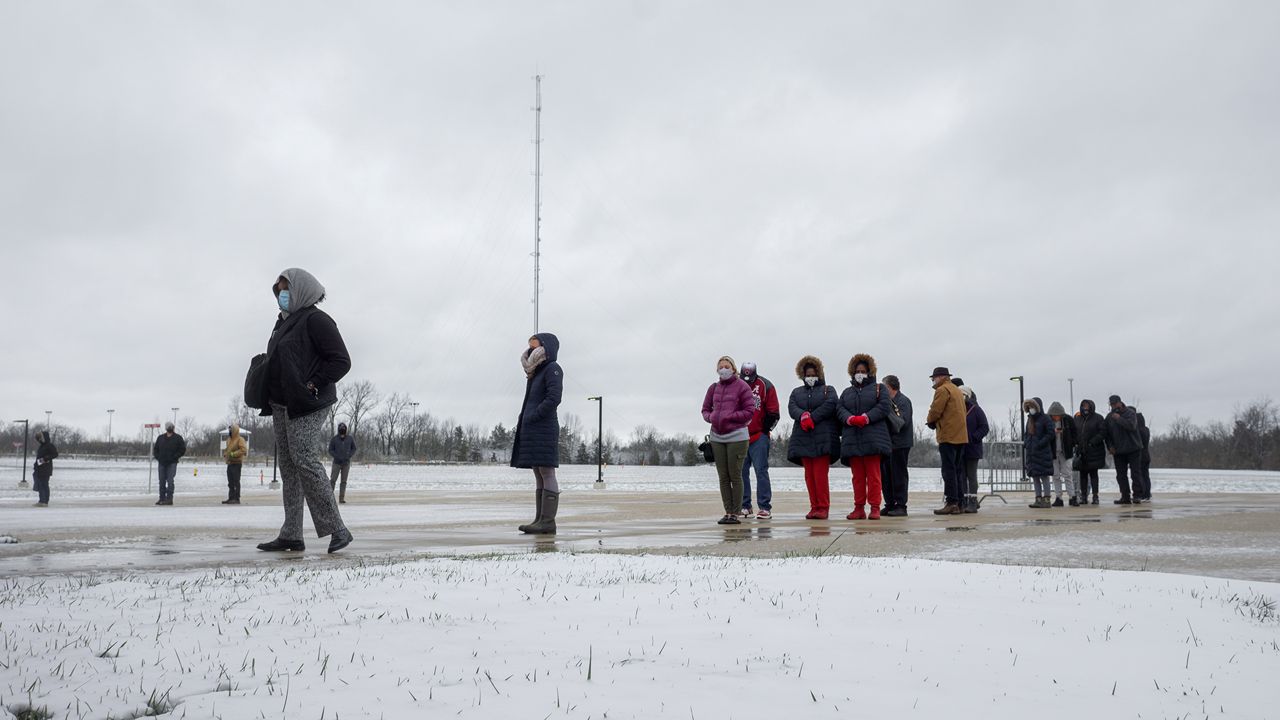COLUMBUS, Ohio — Medically-vulnerable residents became eligible for COVID-19 vaccinations this week as the state made its last expansion of vaccine eligibility for the phase of the rollout.
About 200,000 residents under the age of 65 who suffer from severe congenital, developmental, or early-onset medical disorders are now eligible. They join school staff and seniors 65 and older in the current priority group.
Ohio is receiving 223,025 doses from Pfizer and Moderna this week, which will be delivered to hospitals, health departments, pharmacies, and other providers, officials said.
So far, Ohio has relied on large pharmacy chains for vaccinations, including Kroger, Discount Drug Mart, and Marc’s. This week, the state is making a first step to bringing in more small businesses, adding 17 new independent pharmacies bringing the total to 36, officials said.
Due to the snowstorm blanketing the state Tuesday, some facilities are adjusting or rescheduling vaccination appointments, but many locations will continue operations.
Ohio State University is opening its Schottenstein Center vaccination site with limited hours.
Franklin County Public Health canceled its clinic Tuesday, rescheduling the second shots it planned to give for Thursday and Friday. Columbus Public Health said it would open for limited hours.
Dayton and Montgomery Public Health announced its clinic would proceed for Phase 1A residents getting a second shot. “If you miss your appointment on Tuesday, you will have up to 6 weeks to receive your second dose,” the health department said.
The Christ Hospital in Cincinnati reopened Tuesday at noon.
Kettering Health said it was closing its vaccine clinic Tuesday. Patients were rescheduled for Feb. 23 at the same time, the health system said.
Ohio reported 1,915 COVID-19 cases Monday as the 7-day average continued to decline to 2,732, the lowest level since October.
The state’s dashboard showed 1,633 patients were hospitalized with COVID-19, down from a peak at 5,300 in December. There were 474 patients in intensive care units and 306 on a ventilator.
Ohio has administered vaccines to 1,307,563 million people, which is 11.19% of the state’s population.
Last week, the state announced the fall surge was even worse than previously known. Officials added about 4,000 deaths to the state’s records over the last couple of days that were missed as a result of a data mistake, according to the Ohio Department of Health.
With the data added, it appears Ohio’s deaths peaked on Dec. 17 at 212 in one day. The three other deadliest days of the pandemic were Dec. 18 (211) Dec. 16 (205), and Dec. 19 (204).
EDITOR'S NOTE: Recent death data is incomplete. It may take days or weeks for deaths to be added to the database.



